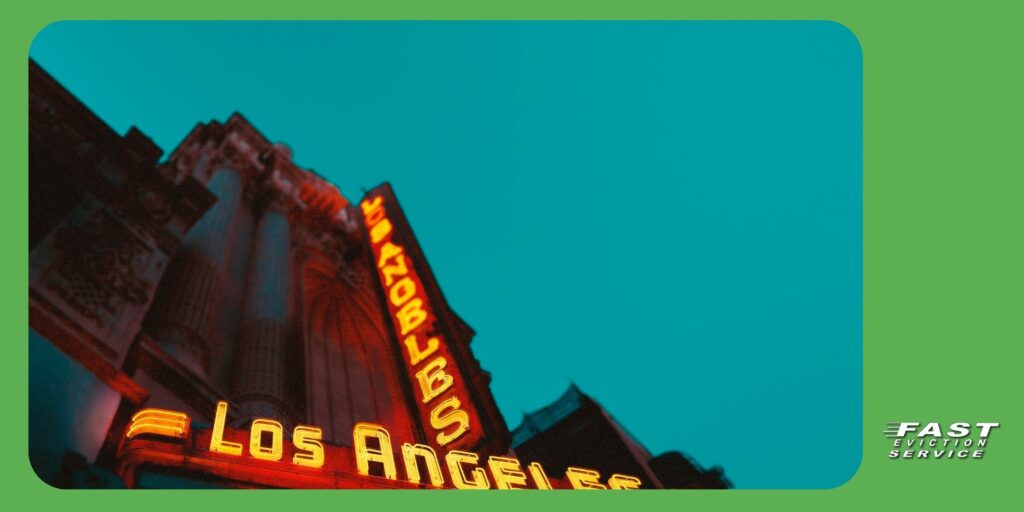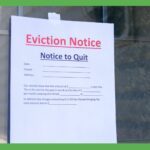You are represented at all times by one of our California Eviction Attorneys | 1-800-686-8686 | intake@fastevict.com | Se habla español
JCO vs. RSO in Los Angeles: A Landlord’s Guide to Evictions in 2025
Navigating eviction laws in Los Angeles can feel overwhelming for landlords. In 2025, both the Just Cause Ordinance (JCO) and the Rent Stabilization Ordinance (RSO) set strict rules that determine when and how you can remove a tenant. Understanding these ordinances—and how recent legal updates like SB 567 and Fair Market Rent (FMR) thresholds apply—is critical for avoiding costly mistakes.
This guide explains the differences between JCO and RSO, breaks down the eviction process step by step, and highlights new rules landlords must follow in 2025.
Key Takeaways
- RSO properties (built on or before Oct. 1, 1978) are subject to both rent control and just cause eviction rules.
- JCO properties (most non-RSO units, including single-family homes) require just cause for eviction but do not impose rent caps beyond state law (AB 1482).
- 2025 updates: Tenants cannot be evicted for non-payment unless rent owed exceeds Fair Market Rent; tenants now have 10 days to respond to eviction lawsuits.
- Relocation assistance is required for no-fault evictions under both JCO and RSO.
- Mistakes in filing notices or failing to comply with LAHD requirements can delay or invalidate evictions.

Table of Contents
- Understanding JCO vs RSO in Los Angeles
- Eviction Process Step by Step
- Eviction Timeline & Common Pitfalls
- Practical Tips for Landlords
- Conclusion
Understanding JCO vs RSO in Los Angeles
What is the Rent Stabilization Ordinance (RSO)?
The Los Angeles Rent Stabilization Ordinance applies to most rental units built on or before October 1, 1978. RSO units are strictly regulated:
- Rent control: Annual increases capped at 4% (July 2024 – June 2025), with up to 1% additional for utilities like gas or electricity.
- Eviction restrictions: Landlords must show just cause, and tenants enjoy additional protections if they are elderly, disabled, or long-term renters.
- Vacancy restrictions: Evictions may be denied if a comparable vacant unit exists.
What is the Just Cause Ordinance (JCO)?
The Just Cause Ordinance covers most non-RSO properties, including single-family homes and newer apartments built after October 1, 1978. Key points include:
- No rent caps unless AB 1482 applies, which limits annual increases to 8.9% through July 2025.
- Just cause required: Landlords can only evict for valid reasons such as non-payment of rent, lease violations, nuisance, or owner move-in.
- No-fault evictions: Allowable in certain cases (e.g., demolition, landlord/family occupancy) but require relocation assistance.
New Updates for 2025
- Fair Market Rent threshold: Under JCO, landlords cannot evict for non-payment unless the tenant owes rent equal to or greater than FMR for the unit’s size.
- SB 567 (effective April 2024): Strengthens no-fault eviction rules, requiring landlords to prove their reason for recovery (e.g., intent to occupy).
- Annual JCO fee: $31.05 per non-RSO unit to support enforcement.
- Extended tenant response: Tenants now have 10 days (excluding weekends/holidays) to respond to eviction lawsuits, up from 5 days.
Eviction Process Step by Step
Step 1: Identify Just Cause
Both JCO and RSO require just cause.
- At-fault causes: Non-payment of rent, unauthorized occupants, nuisance, or illegal activity.
- No-fault causes: Owner/family occupancy, Ellis Act withdrawal, or government order.
Step 2: Serve Notice & File with LAHD
- At-fault evictions: Serve a 3-Day Notice to Pay or Quit or Perform or Quit.
- No-fault evictions: Typically require a 60-Day Notice, though certain tenants may require 120 days or more.
- Filing: A copy of the notice must be filed with the Los Angeles Housing Department (LAHD) within 3 business days.
Step 3: Wait Out the Notice Period
- 3 days (excluding weekends/holidays) for at-fault notices.
- 60+ days for no-fault evictions.
- Landlords cannot proceed with non-payment evictions unless arrears exceed the Fair Market Rent threshold.
Step 4: File Unlawful Detainer
If the tenant does not comply:
- File the Unlawful Detainer lawsuit with the court (forms include SUM-130, UD-100, CM-010).
- Tenants now have 10 days to respond.
Step 5: Secure Default Judgment or Trial
- If no response is filed, landlords may request a default judgment.
- If the case is contested, a trial will be scheduled, often extending timelines.
Step 6: Sheriff Lockout
- Once the court issues a Writ of Possession, the sheriff posts a 5-Day Notice to Vacate.
- After the notice expires, the sheriff removes the tenant and returns possession to the landlord.
Eviction Timeline & Common Pitfalls
- Timeline: On average, an eviction in Los Angeles takes 45–75 days but may take longer due to court backlogs.
- Common pitfalls for landlords:
- Failing to file notices with LAHD.
- Serving incorrect notice types.
- Missing relocation assistance payments.
- Incomplete or incorrect court filings.
Practical Tips for Landlords
- Confirm whether your property falls under RSO or JCO/AB 1482 before serving notice.
- Track Fair Market Rent thresholds and ensure compliance before pursuing non-payment evictions.
- Always file eviction notices with LAHD within 3 business days.
- Provide relocation assistance promptly for no-fault cases.
- Keep detailed records of notices, filings, and payments.
- Consider working with an experienced landlord attorney to avoid delays.
Conclusion
In 2025, Los Angeles landlords must carefully follow the JCO and RSO rules to legally and successfully evict tenants. With tighter protections, extended response times, and higher compliance requirements, landlords need to stay proactive and detail-oriented. Understanding these ordinances ensures you protect your investment while avoiding costly legal missteps.

